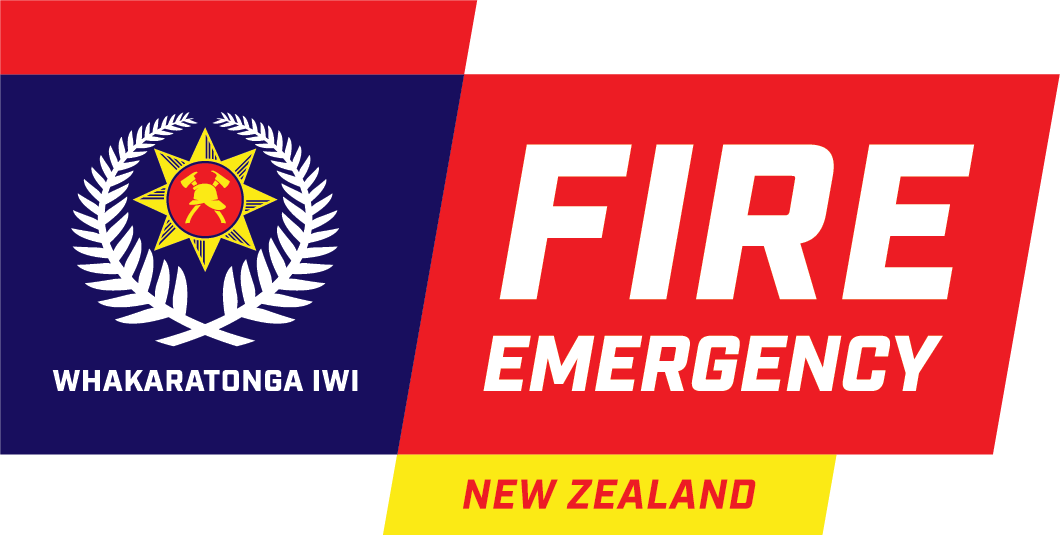Working safely while wearing Breathing Apparatus (BA)
What is the issue?
We have identified a trend in injuries and events reported where firefighters have fallen backwards when wearing BA sets.
Why is this important?
The safety, health, and well-being of our people is our priority – everyone should be able to go home safe and well every time they undertake work for Fire and Emergency.
When did this happen?
In the 24-month period to July 2023, there were 40 events and injuries reported in Safe@Work involving firefighters falling backwards when wearing Breathing Apparatus (BA). There were also 45 reports for other slips, trips, and falls and the majority of these were when wearing BA.

Firefighters performing a patient rescue drill.
How did it happen?
Here are some of the situations where firefighters fell backwards while wearing BA:
- Fell from the steps of an appliance
- Fell down a retaining wall/off a fence
- Tripped on an object
- Fell due to a wind gust
- Walking/moving backwards
- Walking on uneven ground/slope/slippery surface
- Opening a door
- Holding/handling a delivery
- Performing a patient/dummy rescue
Event and injury severity
The events and injuries in this analysis ranged in severity from no lost time and first aid to more serious (e.g., fractures, sprains and concussion) resulting in a number of months off work for some. This was followed by a return-to-work plan on light duties for career personnel and extended time off work on ACC for our volunteers.
It highlights the importance of reporting near misses and injuries in Safe@Work. From these we have been able to identify a trend taking place and develop this learning article to increase awareness, the aim being to reduce these recurring injuries and near misses.
A big thank you to all our people who have reported injuries and near misses. This contributes to an awareness of hazards in the workplace, and you may have helped prevent future serious injuries!
What can firefighters do to minimise the risk of falling when wearing BA?
Policy, training, and education
Firefighters are trained how to safely wear and use BA sets, including how to move around safely in different environments. Ensure you include this in your drills regularly to maintain your safety critical skills.
- From time to time review the relevant parts in E3-2 RG Respiratory Protection Equipment Reference Guide [PDF, 7.7 MB] and the BA modules on Learning Station.
- Encourage regular refresher training on BA safety with your crew.
- Regularly practice the MAYDAY Procedure and be aware of when it must be declared. You will find this in the E3-2 RG Respiratory Protection Equipment Reference Guide.
[PDF, 7.7 MB] - Take the time to adjust the harness and straps of the BA set correctly when donning up. This ensures comfort and functionality when moving and working in challenging environments.
- Practise hose handling techniques while in BA – where possible always have another firefighter back you up on a delivery and assist you when manoeuvring with a charged delivery.

-
Be aware of your footing and body position to counter the effects of jet reaction when operating a delivery – open and close the branch smoothly and steadily. Where possible, make sure you have laid your hose line out straight near the branch end to minimise jet reaction.
-
Pump Operators are required to operate a pump in a safe manner and follow the correct procedure when operating deliveries. Adjust the throttle and open and close delivery valves slowly and steadily to reduce the chance of excessive pressure affecting the Branch Operator.

Firefighter operating a delivery - note position of the delivery - what could happen here?
Situational Awareness
- Be aware of your surroundings and the environment you are walking in. Look out for obstacles – rocks, uneven surfaces, dips in the ground, objects hidden in long grass or vegetation. This is important at all times – not just when wearing BA.
- Take extra care when the ground is wet or slippery underfoot.
- Scan the area behind you for hazards before walking backwards (under running a ladder, dragging a hose).
- Check the Feederlines page on Portal for case studies and lessons. Use these to discuss situational awareness and drill scenarios with your crew.
- Always maintain three points of contact when climbing up or down from a fire appliance, ladder, or an obstacle.
- Carry out a Dynamic Risk Assessment as the situation/environment changes.
- Apply the Safe Person Concept in all working environments.
- Check all your PPE regularly – do your quarterly check and refer to the video Does Your Kit Still Fit? (on Learning Station) for some great PPE information and advice.
